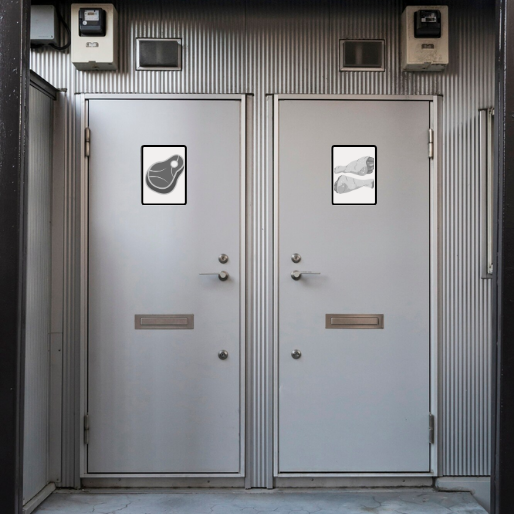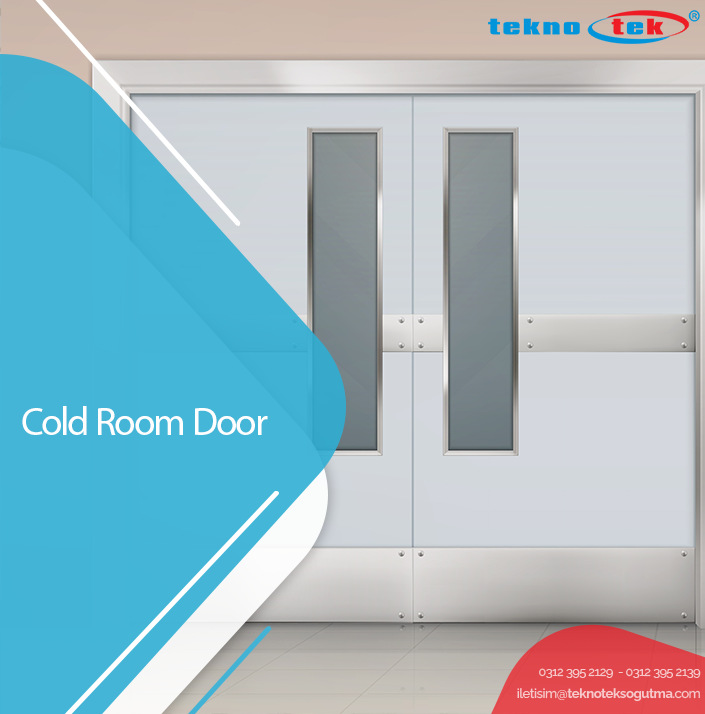Cold room doors are specially insulated doors used in the food, pharmaceutical, and logistics industries to maintain temperature control. These doors are manufactured with special gaskets that ensure airtightness and high-density polyurethane fillings. These systems minimize cold air loss and play an important role in increasing energy efficiency in storage areas. Depending on the intended use, they are available in sliding, hinged, or automatic models.
Cold room door systems can be customized according to different temperature ranges and application areas. With a wide range of applications, details such as insulation thickness, locking mechanism, and gasket type in each model are determined based on the room’s internal temperature requirements. These doors help preserve product freshness and become an essential component that supports business efficiency in terms of energy savings and hygiene.
Cold Storage Room Door
A cold storage door is a technical element designed to maintain stability in environments that require low temperatures. Thanks to its high-density polyurethane filling, it minimizes heat transfer and prevents energy loss. The use of galvanized or stainless-steel sheets on the outer surface provides a hygienic finish and resistance against corrosion in humid environments.
Door systems can be produced in sliding, hinged, or automatic models depending on usage purposes. These automatic systems are particularly preferred in industrial facilities, allowing temperature balance to be maintained during heavy traffic operations.
From a technical perspective, stainless-steel cold room door types are commonly used in the food and pharmaceutical industries, where hygiene and airtightness are of utmost importance.
Cold room door systems are manufactured in varying thicknesses according to temperature ranges. These are special solutions developed for deep-freezing environments requiring resistance down to -40°C. The door panels of these systems may include anti-condensation heating resistors. For long-term durability, the door frames can be equipped with robust gaskets and hinge mechanisms.

Cold room doors offer many technical advantages in terms of functionality. These advantages include:
- High insulation value for energy efficiency
- Hygienic surface design that allows easy cleaning
- Sealing gaskets preventing moisture and air leakage
- Anti-condensation details that eliminate icing risk
- Modular structure ensuring easy installation and maintenance
In addition to preserving temperature, these door systems are strategic components that maintain the energy efficiency, product safety, and hygiene standards of facilities.
Warehouse Door Models
The design of cold storage door models varies according to ambient temperature and frequency of use, incorporating different technical features. The main goal is to preserve heat insulation and improve operational efficiency. Therefore, manual, semi-automatic, and fully automatic systems are available among door types.
The insulation material, hinge structure, and locking mechanism used in each model are selected considering storage conditions. Some models feature special rail systems that operate smoothly even at low temperatures. This structure helps prevent energy loss in areas with frequent opening and closing.
Among the models, the sliding cold room door stands out as an ideal solution for large-scale warehouses due to its ease of use and wide-opening advantage. In addition to the rail system, these doors feature soft-closing mechanisms, safety sensors, and thermally broken frames. When necessary, an observation window placed on the door panel enables monitoring of internal conditions.
Some of the key features of warehouse door models include:
- High-insulation materials providing energy efficiency
- Suitable for use in food and pharmaceutical storage
- Automatic options offering convenience in high-traffic areas
- Durable rail systems ensuring long-term smooth operation
Although warehouse door models serve as physical entry-exit elements, they are technical solutions that preserve the integrity of cooling systems and optimize operational processes.
Monorail Sliding Door
This door system is integrated into a ceiling rail and enables uninterrupted load transfer in the cold storage area. The model is designed to allow the monorail line to pass through the door opening and is especially preferred in facilities such as meat-processing plants where hanging transport systems are used.
Monorail Hinged Door
This model stands out for its compatibility with hanging transport systems and ease of manual operation. A special section in the door panel allows the monorail line to pass through, enabling load transfer along the rail without needing to open the door. This makes it an ideal solution for production lines where hygiene and workflow continuity are essential.
Sliding Cold Storage Doors
This model is designed to provide easy access through wide openings while minimizing temperature loss. The door panel moves along a rail system, operating quietly and smoothly. With its polyurethane-filled body, it offers excellent insulation performance, and the stainless-steel exterior surface provides both hygiene and durability.
Hinged Type Doors
Hinged doors are ideal solutions for small and medium-sized cold rooms. With their easy installation, strong locking systems, and high insulation value, they are widely used in cold storage rooms or controlled-temperature production areas.
Flip-Flap Doors
With flexible bi-directional opening structures, this system offers speed and practicality in high-traffic areas. It is frequently used in production lines, food processing facilities, and logistics centers. Transparent PVC panels provide visual contact and safe passage, while the quick-closing feature minimizes cold air loss.
You can contact Teknotek to get detailed information about cold room door systems.

